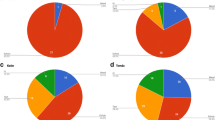Abstract
This report describes three experiments designed to measure the changes in children's social speech produced by features in the physical environment that are designed to alter verbal communication contingencies between players. All experiments utilized A-B-A-B withdrawal designs. Both conditions consisted of free play at an ordinary open table, but, in the experimental condition, partitions between players allowed only partial visual contact. In the first experiment, the partitions produced sharp drops in the amount of speech referenced to playthings but no changes in the level of specificity. In the second experiment, no changes in verbal referents were produced, but significant increases in specificity of speech occurred when the partitions were in place. Similar results were obtained in Experiment 3. The results are considered as confirmation of the importance of physical environmental factors in the regulation of children's play, with differential results attributed primarily to differential reinforcement of specific and nonspecific speech when the partitions were in place.
Similar content being viewed by others
References
Berlyne, D. (1963). “Exploratory and epistemic behavior,” in S. Koch (Ed.), Psychology as a Science (Vol. 5). New York: McGraw-Hill.
Bruner, J. S., Jolly, A. and Sylva, K. (1976). Play. Harmondsworth, U.K.: Penguin.
Christie, J. F. and Johnsen, E. P. (1983). “The role of play in social-intellectual development,” Review of Educational Research 53: 93–115.
Ellis, M. J. and Scholtz, G. J. L. (1978). Activity and Play of Children. Prentice-Hall International Research Monograph Series in Physical Education. Engelwood Cliffs, Prentice-Hall Inc.
Flavell, J. H. (1968). The Development of Role Taking and Communication Skills in Children. New York: Wiley.
Gehlbach, R. D. (1984). “Children's Play and Self-Education.” Manuscript submitted for publication.
Hersen, M. and Barlow, D. (1976). Single-Case Experimental Designs: Strategies for Studying Behavior Change. New York: Pergamon Press.
Hutt, C. (1966). “Exploration and play in children,” in P. A. Jewel and C. Loizos (Eds.) Play, Exploration and Territory in Mammals. New York: Academic Press.
Singer, Jerome. (1973). The Child's World of Make-Believe: Experimental Studies of Imaginative Play. New York: Academic Press.
Sutton-Smith, B. (1979). Play and Learning. New York: Gerdner Press.
Vlietstra, A. (1978). “Exploration and play in preschool children and young adults,” Child Development 49: 235–238.
Author information
Authors and Affiliations
Rights and permissions
About this article
Cite this article
Gehlbach, R.D., Partridge, M.J. Physical environmental regulation of verbal vehavior during play. Instr Sci 13, 225–242 (1984). https://doi.org/10.1007/BF00055533
Issue Date:
DOI: https://doi.org/10.1007/BF00055533




